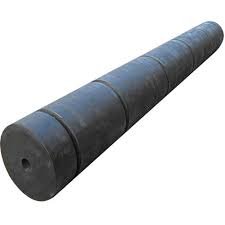Super Cone Rubber Fenders: The Quiet Fix for Docks That Stop Hurting (and Start Saving You Money)
04/11/2025Beenest Ship Launching Airbags: The Secret Weapon Shipbuilders Swear By (And Why You Need Them Now)
11/11/2025

Last month, I called Captain Jake—he runs a 5-tug fleet in Houston, hauling oil barges up the Mississippi. “Man, I’m done,” he said, voice tired. “Last week, a barge clipped our dock with a old rubber fender that split clean in half. The impact cracked our starboard hull, and we lost three days of work waiting for repairs. That’s $12k down the drain—and my crew’s stressed about safety.”Jake’s not alone. Most tug operators start with cheap, generic marine fenders—only to learn too late they’re gambling with their livelihood. Tug boats are workhorses: they pull, push, and nudge vessels 10x their size. Their fenders need to be tougher than the rest. That’s where Tug Boat Fenderscome in. These aren’t your average dock floats—they’re the heavy-duty guard dogs built to take the beatings tugs dish out.
What Exactly Are Tug Boat Fenders? (Spoiler: They’re Not for Yachts)
Let’s cut to the chase: Tug Boat Fenders are specialized marine fenders designed to absorb the brute forceof towing, docking, and pushing large vessels.Unlike the soft, squishy fenders you see on sailboats, tug fenders are made from extra-thick natural rubber(often reinforced with steel or polyester cords) that won’t tear or flatten when hit by a 10,000-ton barge. They’re bigger—usually 2–4 feet wide—and have a “bulbous” or “tapered” shape to spread impact force evenly across the tug’s hull.Think of them like this: If a regular rubber fender is a pillow, a tug fender is a mattress. Both cushion, but only one can handle a freight train.
Why This Isn’t Just an Upgrade—It’s a Business Lifesaver (Urgent Examples)
Here’s the hard truth: One failed fender can cost you more than money—it can cost you time, safety, and clients.
- •A tug operator in New Orleans lost a propeller after hitting a dock with a worn-out fender. Repair costs? $45k—and they missed a critical contract to move a tanker.
- •A Florida tug fleet switched to heavy-duty tug fenders last year. Result? 70% fewer repairs, zero downtime for fender-related issues, and their clients rated them “most reliable” in the region.
- •The stakes are real: Tug boats move 80% of global trade. When they’re down, supply chains stall. Your fenders aren’t just protecting your boat—they’re protecting the entire economy.
Tug Boat Fenders aren’t a “nice-to-have”—they’re insurance for your business.
Why Tug Fenders Beat Every Other “Budget” Option
You might think, “Can’t I just use regular marine fenders?” Wrong. Tug boat fenders solve problems generic ones can’t:
1. They Take the Hit So Your Tug Doesn’t
Tugs pull barges weighing thousands of tons. Generic fenders would shred or flatten—but tug fenders’ thick, reinforced rubber spreads that force evenly. No cracks, no tears, no hull damage.
2. They’re Built to Last (Saltwater, UV, and All)
Tug boats live in harsh conditions: saltwater, sun, and constant vibration. Tug fenders are engineered to resist it all—most last 10–15 yearsvs. 2–3 for cheap alternatives.
3. They’re Low-Maintenance (No Surprise Repairs)
Forget weekly patch jobs. Tug fenders just need a monthly rinse with fresh water, a quick check for tears, and occasional bolt tightening. That’s it—no downtime, no headaches.
Real Talk: A Fleet Owner Who Sleeps Better at Night
Meet Maria—she runs a 3-tug fleet in Seattle, hauling cargo containers. “Before tug fenders, we were replacing them every spring,” she said. “Our crews would complain about vibrations from hits, and we’d have to cancel tows for repairs. Now? We haven’t had a single fender failure in two years. My crews are safer, our downtime is zero, and clients love our reliability. Worth every penny.”Maria’s story isn’t unique. Every tug operator who switches to heavy-duty fenders says the same thing: It’s the best money they’ve spent on their boat.
People Also Ask: Your Tug Boat Fender Questions—Answered
We get these queries daily—let’s clear them up so you can stop overthinking:
Q: How are tug boat fenders different from regular marine fenders?
A: Tug fenders are thicker, reinforced, and built for heavy impacts. Regular marine fenders are for light use (yachts, small docks)—they’ll fail under a tug’s workload.
Q: What’s the best material for tug boat fenders?
A: High-density natural rubber with steel or polyester reinforcement. It resists tearing, UV rays, and saltwater—key for tug boats that spend days in the ocean.
Q: Do tug fenders work with marine airbags?
A: Yes—but for different jobs. Marine airbagslaunch or lift ships; tug fenders protect tugs from daily impacts(towing, docking). You need both for a busy port.
Q: How long do tug boat fenders last?
A: With basic care? 10–15 years. Their reinforced rubber holds up to the toughest conditions—way longer than generic options.
Q: Are tug fenders worth the upfront cost?
A: 100%. A good tug fender might cost 2x more than generic—but saves 10k+inrepairsoveritslifespan.Oneoperatorsaved60k in five years by switching.
Final Thought: Stop Gambling With Your Livelihood
Tug boat fenders aren’t the flashiest marine product—but they’re the one that keeps your business running. Whether you run a fleet or a single tug—you deserve fenders that protect your crew, your boat, and your bottom line.Ready to upgrade? Start by measuring your tug’s needs:
- •How much towing do you do?
- •What size barges do you handle?
- •Where do you dock (exposed ocean vs. calm marina)?
Then reach out to a manufacturer that specializes in tug fenders. They’ll help you pick the right ones—and maybe even install them, so you don’t have to lift a finger.Your future self will thank you: when you’re not stuck on shore fixing a broken fender, when your crews are safe, and when your clients keep calling because you’re the “reliable one.”Invest in tug boat fenders. Protect what matters.Keywords: Tug Boat Fenders, marine fenders, rubber fenders, marine airbags, tug boat protection, heavy-duty marine fenders, dock safety
